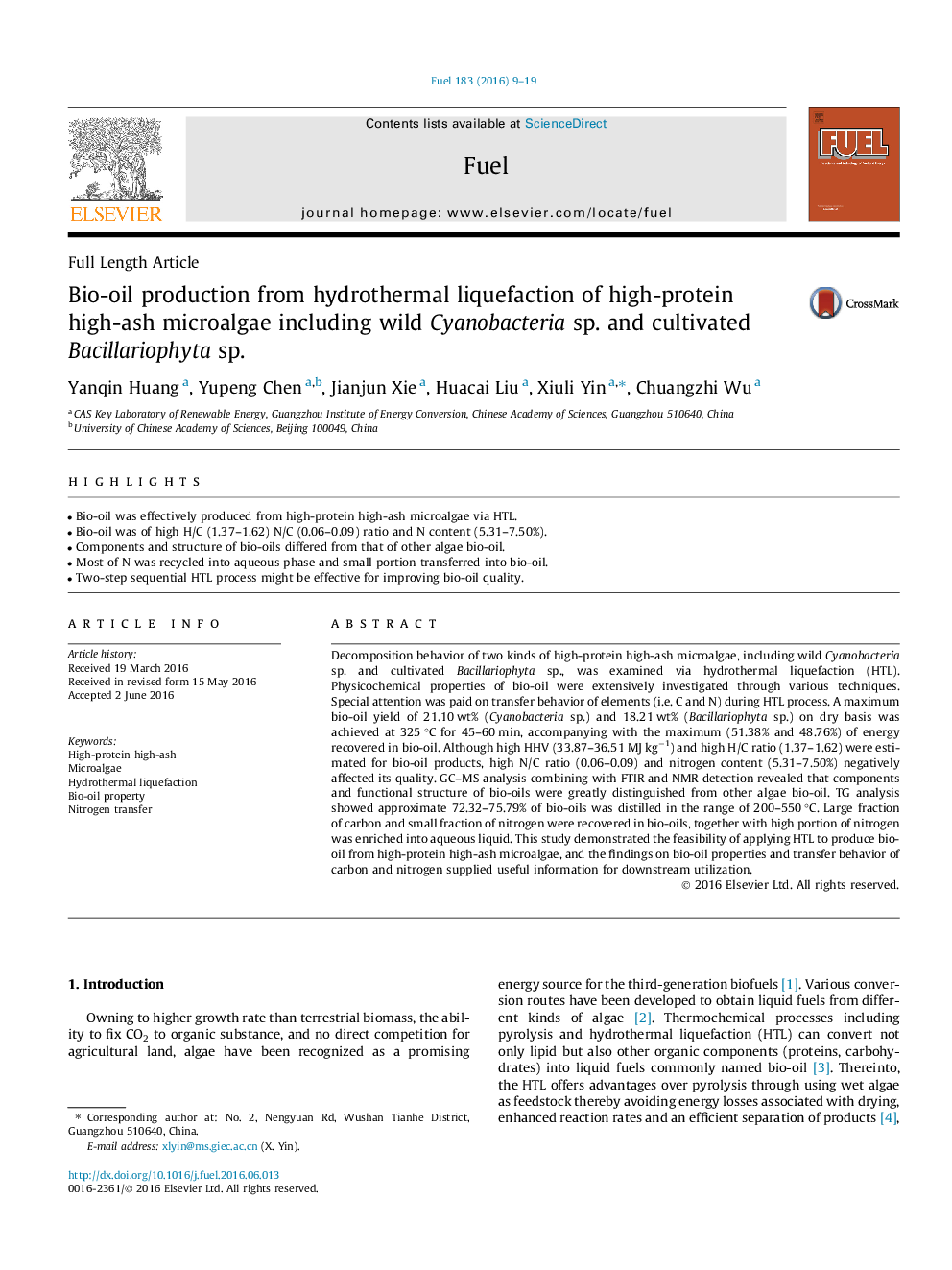| Article ID | Journal | Published Year | Pages | File Type |
|---|---|---|---|---|
| 6633191 | Fuel | 2016 | 11 Pages |
Abstract
Decomposition behavior of two kinds of high-protein high-ash microalgae, including wild Cyanobacteria sp. and cultivated Bacillariophyta sp., was examined via hydrothermal liquefaction (HTL). Physicochemical properties of bio-oil were extensively investigated through various techniques. Special attention was paid on transfer behavior of elements (i.e. C and N) during HTL process. A maximum bio-oil yield of 21.10 wt% (Cyanobacteria sp.) and 18.21 wt% (Bacillariophyta sp.) on dry basis was achieved at 325 °C for 45-60 min, accompanying with the maximum (51.38% and 48.76%) of energy recovered in bio-oil. Although high HHV (33.87-36.51 MJ kgâ1) and high H/C ratio (1.37-1.62) were estimated for bio-oil products, high N/C ratio (0.06-0.09) and nitrogen content (5.31-7.50%) negatively affected its quality. GC-MS analysis combining with FTIR and NMR detection revealed that components and functional structure of bio-oils were greatly distinguished from other algae bio-oil. TG analysis showed approximate 72.32-75.79% of bio-oils was distilled in the range of 200-550 °C. Large fraction of carbon and small fraction of nitrogen were recovered in bio-oils, together with high portion of nitrogen was enriched into aqueous liquid. This study demonstrated the feasibility of applying HTL to produce bio-oil from high-protein high-ash microalgae, and the findings on bio-oil properties and transfer behavior of carbon and nitrogen supplied useful information for downstream utilization.
Related Topics
Physical Sciences and Engineering
Chemical Engineering
Chemical Engineering (General)
Authors
Yanqin Huang, Yupeng Chen, Jianjun Xie, Huacai Liu, Xiuli Yin, Chuangzhi Wu,
